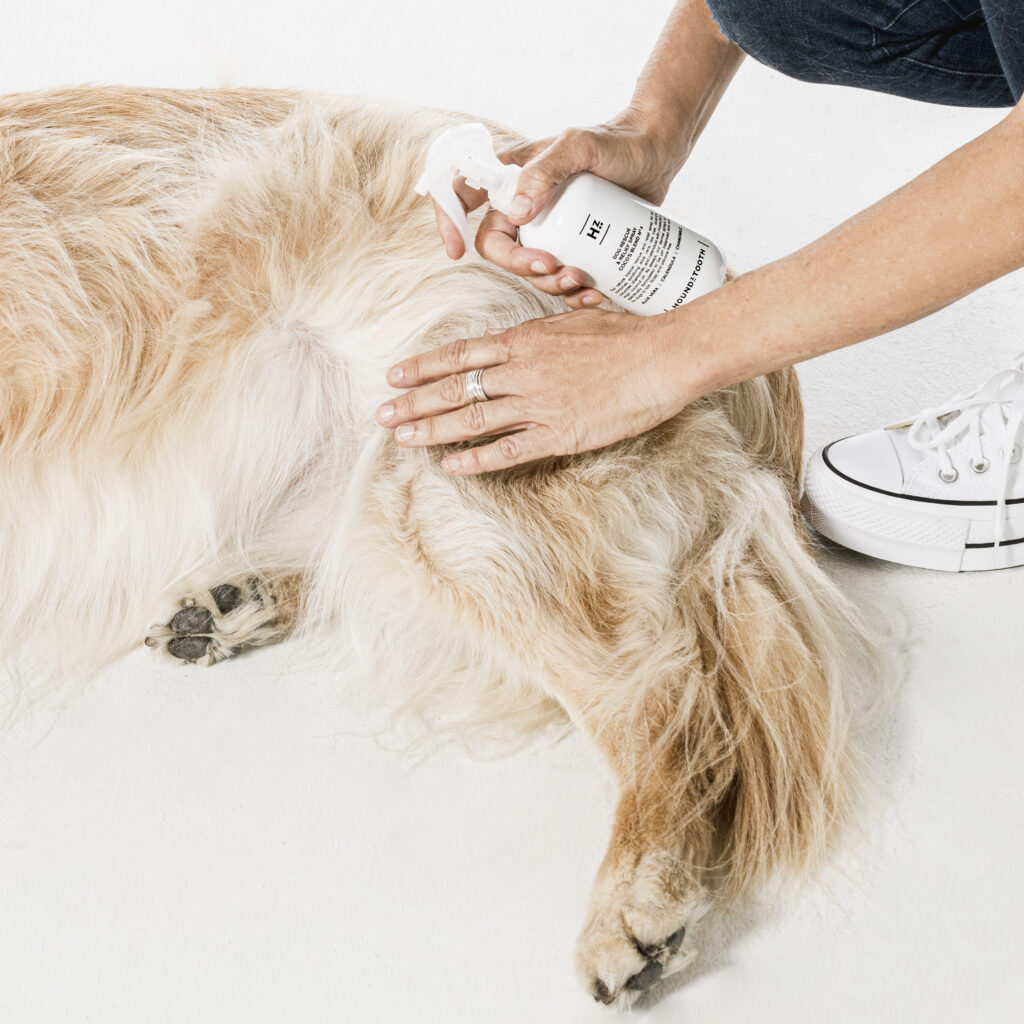Dr Katrina’s Hot Tips on Caring for Your Dog’s Coat in Spring & Warm Weather
Dr Katrina’s Tips on Caring for Your Dog’s Coat in Spring & Warm Weather
Should I clip my dog in the warmer months?
For those with a double-coated dog, such as a Border Collie, Golden Retriever, Aussie Shepherd, Pomeranian, or Siberian Husky, clipping your dog coats in Spring may seem like a practical solution to combat the heat, but shaving them may have consequences and is not recommended. Double-coated dogs possess two layers of fur, with the outer coat protecting against elements like sun, rain, and snow. The inner undercoat provides insulation and helps regulate their body temperature during cooler months.
Shaving a double-coated dog may interfere with their natural ability to stay cool in summer. As these dogs naturally shed their undercoat during the warmer months, air moves through the guard hairs to cool the skin. Shaving disrupts this process and leaves the skin exposed to direct sunlight, increasing the risk of overheating, sunburn, and skin issues. Furthermore, shaved fur often doesn’t grow back evenly; the undercoat often grows first, leading to changes in the coat’s texture and the potential for mat formation.
As an alternative to clipping or shaving, we recommend focusing on regular brushing and grooming to remove loose undercoat fur. Grooming is better to help your dog stay more comfortable in warm weather while preserving the integrity of their natural insulation. Shaving should only be done when specific circumstances like matting, skin conditions, or allergies exist. Shaving may be unavoidable in cases where it is needed to remove the coat for a veterinary procedure. In most cases, maintaining the double coat is the best way to help your furry friend endure the summer months while ensuring their long-term health and well-being.
Using the right grooming tools helps remove loose undercoat; I start with a rake and follow with a slicker brush. The process is a lot gentler on your dog if you use a conditioning spray or detangler spray such as the Houndztooth No Knots Detangler Spray, Lenny’s Blend No. 6 which reduces pulling and tangling, making it much more comfortable for your dog.

Can dogs get allergies in Spring?
Yes, dogs can develop seasonal allergies during spring, just like humans.
Common springtime allergens for dogs are pollen, grass, dust mites and mould spores. These allergens cause the dog’s immune system to overreact and dogs usually show symptoms of allergies through their skin. Their skin will be itchy or irritated. You may see your dog licking or biting their paws or skin, scratching or rubbing their belly along the ground. Sometimes, they get itchy ears, and you may see them scratching their ear or shaking their head.
All skin allergies risk developing a secondary infection due to bacteria and yeast entering through sores, so it is important not to ignore symptoms. Plus, your dog may be extremely uncomfortable. Your vet will want to rule out fleas as a possible cause, then try to identify the allergen; it can take time to identify as the allergens are usually environmental.
Your vet will discuss the best treatment plan for your circumstances, but here are a few simple ways you can try to help your pet during spring:
5 Tips on Caring for Dog Coats in Spring
Regular Grooming
In Spring and warm weather, your dog needs more frequent brushing and grooming to remove loose undercoat fur, helping them stay cool. Grooming helps your dog stay more comfortable in warm weather while preserving the integrity of their natural insulation.
Opt for a gentle shampoo and conditioner
Choose one that cleans your dog and safeguards their skin. Look for hypoallergenic and sulphate-free options to minimise the risk of irritation.
Stella’s Blend No. 2 Value Pack Shampoo and Conditioning & Deodorising Spray
Topical skin sprays
Use a topical spray if your dog has sensitive skin or is prone to seasonal allergies. The Houndztooth Coco’s Rescue & Relief Spray is a natural topical skin spray combining aloe vera, lavender, cucumber, chamomile, and calendula essential oils with moisturising virgin coconut oil. This dermal spray is specifically formulated to cleanse and condition your dog’s skin.

Incorporate essential fatty acid
Enhance your dog’s diet with a generous supply of omega-3 and omega-6 fatty acids. These nutrients can be vital in supporting your pet’s skin health. The Houndztooth Hemp Seed Oil is high in antioxidants and is nature’s perfect balance of Omega 3, 6 and 9. If you have a fussy eater, a meal topper is an easy way to boost your dog’s diet and incorporate essential fatty acids, with the Houndztooth Skin & Coat Health Meal Topper. This is a freeze dried, single protein topper that can be sprinkled onto or mixed into your dog’s meal- and they love the taste!
Wipe after walks
Make it a habit to wipe down their paws and coat after a walk. A damp cloth can effectively remove allergens, keeping your furry friend more comfortable and less prone to skin irritations.
In short, it’s best not to clip your dog in the warmer months as this interrupts their natural ability to stay cool in summer, but there are other easy things you can do to help them stay comfortable in warm weather.
If you are concerned about heat stroke or heat stress for your dog, read the RSPCA’s heatstroke information here, or click here for some further advice from Dr Katrina Warren on 9 Honey.
For more information on grooming and dog coats in Spring, read the Tips for Grooming Border Collies & Double Coat Breeds article here.
